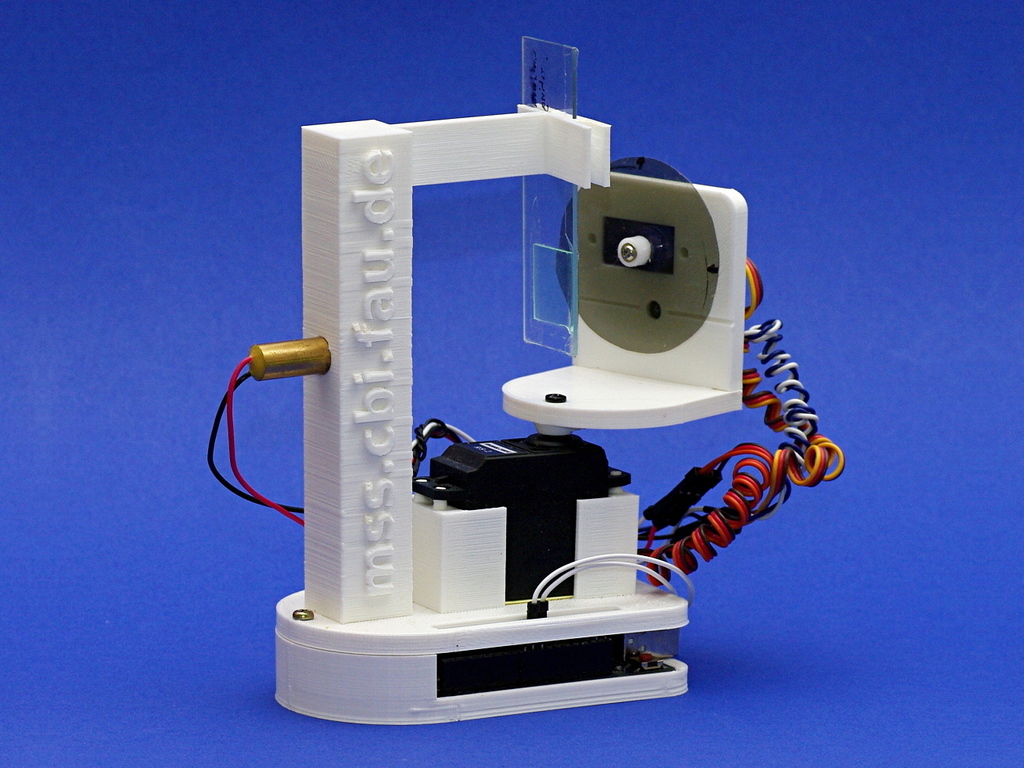
Fully Automated Light Scattering Experiment
thingiverse
A highly automated affordable educational lab experiment is designed to measure optical scattering, specifically polarization and angular cross-section, at a cost of just $50. This beginner-friendly setup is ideal for measuring light scattering by optical gratings, with the calibration process utilizing the well-known equation "grating_constant x sine(nth scattering angle) = n x wavelength" in relation to scattering from a CD-R surface. Developed in our laboratory physics courses, this experiment demonstrates Mie-scattering by microscopic colloidal particles. Mie-scattering refers to light scattering by objects comparable in size to the wavelength, which is typically used in expensive laboratory equipment to determine size-distributions of colloidal suspensions. The setup is controlled via an Arduino placed at the bottom of the device, requiring a small amount of soldering or a separate bread-board for assembly, which can be accomplished on an undergraduate or even school level. Detailed information, including a list of required components, assembly instructions and software (OpenSCAD files; Arduino Firmware; Python & Octave scripts for analysis of measurements - all GPL licensed) can be found on our dedicated website: http://www.mss.cbi.fau.de/Mie-experiment A live-demonstration of the measurement is available here: https://www.youtube.com/watch?v=A-WL2huUDuc The device was featured in the 3/17 German issue of the Make magazine: https://www.heise.de/make/meldung/Guenstig-dank-Maker-Technik-Optik-Experiment-fuer-Schulen-und-Unis-3716721.html For details on the experiment and explanation of the physics of Mie-scattering, we published a scientific paper here: C. Scholz, A. Sack, M. Heckel and T. Pöschel, Inexpensive Mie scattering experiment for the classroom manufactured by 3D printing, Eur. J. Phys. 37 055305 (2016) http://iopscience.iop.org/article/10.1088/0143-0807/37/5/055305 All parts were printed using an FDM printer (Kühling & Kühling RepRap), with PLA or ABS material used at a 20% filling and 80% for the base. Post-processing involves gluing and screwing together individual parts and electronic components, with some minor adjustments possibly needed to available servos, diodes, etc.
With this file you will be able to print Fully Automated Light Scattering Experiment with your 3D printer. Click on the button and save the file on your computer to work, edit or customize your design. You can also find more 3D designs for printers on Fully Automated Light Scattering Experiment.
